In 2016, after nearly two decades in professional life, I enrolled in not just one, but six online courses offered by the reputed Interaction Design Foundation (IDF). My initial plan was to complete a course on ‘Services Design’ but I ended up completing these:
- Emotional design – how to make products that people will love
- User research –methods and best practices
- Conducting usability testing
- Information visualization – getting dashboards right
- Mobile user experience design – designing UX for mobile apps
- Design Thinking – the beginner’s guide
Completing these courses and learning something new was useful and a deeply enriching experience. The cherry on top was the email from Interaction Design Foundation about my performance: “One of our developers did a database extract of the top performers (1%) in our courses, and your name came out on that list!’’ – Mads Soegaard, Founder and Editor-in-Chief, Interaction Design Foundation
After I completed these courses many have asked for book recommendations on the topic. But Design Thinking is one piece of the puzzle when it comes to solving complex business problems. Over the years, as a consultant, I have worked with several CXOs across diverse business categories and geographies. The business problems faced by each of those organizations were unique and covered a range of aspects: service delivery process, organization structure, brand positioning and many more. Aside from hands-on experience, I realized that the holistic thinking outlined in several books helped me immensely to grasp the problems at hand and offer solutions.
Among many such books, here are my 5 top picks, which would help CXOs take a 360-degree approach in solving business problems:
Book 1 – Start With Why: How Great Leaders Inspire Everyone To Take Action by Simon Sinek
In a succinct TED Talk, Simon Sinek connected Martin Luther King Jr, Steve Jobs and demonstrated that they all think in the same way – they all started with ‘why’, the larger purpose. Nike says, ‘our purpose is to use the power of sport to move the world forward’. And they outline their mission as: “Bring inspiration and innovation to every athlete in the world”.

Author – Simon Sinek
But the clincher is in defining who an athlete is: ‘if you have a body, you are an athlete’. Suddenly, Nike’s business is elevated from selling shoes & sportswear to a rallying clarion call. It is meaningful for their employees, partners and various stakeholders. You can see its manifestation in their hugely successful marketing and the famous ‘Just Do It’ tagline. I believe every organization can define such a lofty goal.
At Robosoft, our core purpose is to “simplify lives” through delightful digital experiences. We believe in simplifying every aspect of life; the way people buy, transact, pay, get entertained, bank, get insured, sell, invest, mange health, etc. We touch billions of lives through our advice, design and technology capabilities.
Such goals are best set in an inclusive manner so that employees buy into them and do not see it as a diktat from the top. Simon Sinek’s book explains the framework needed for businesses to move past knowing what they do to how they do it, and then to ask the more important question – WHY?
Book 2 – Strategy Maps: Converting Intangible Assets into Tangible Outcomes by Kaplan and Norton
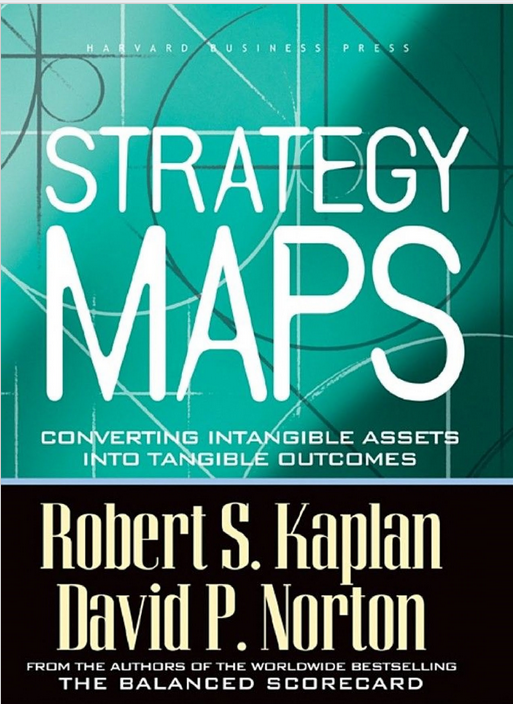
Author – Robert S. Kaplan, David P. Norton
Businesses are more complex than ever before. Competition comes in various shapes and from unexpected quarters. No one would have predicted taxi aggregators would change the face of urban transport across the globe. FinTech players continue to challenge traditional banks. Such complex challenges call for not just a clear strategy; but also require an implementation framework. Kaplan and Norton argue that the most critical aspect of strategy is to define how an organization is different from competition or what is the unique value proposition to customers. Organizations generally choose to differentiate themselves either on Total cost, Complete customer solution or Product innovation. E.g. Apples competes on innovation, Walmart competes on cost, and IBM competes on “one stop shop for IT”.
At Robosoft, we chose our value proposition to be “a full-service digital experiences agency” by offering digital advice, design thinking and emerging technologies implementation.
Once the customer value proposition (CVP) is chosen, implementing it in a way that ensures sustained value creation–depends on managing four key value-creating internal process perspective categories: operational efficiency, customer relationships, innovation management, and regulatory/social processes. The processes are then enabled by the learning and growth perspectives which consists of Human capital (skills, knowledge and competencies), Organization capital (culture, alignment, teamwork and leadership) and Information capital (IT applications, infrastructure and systems). This book taught me the benefit of defining the HOW?
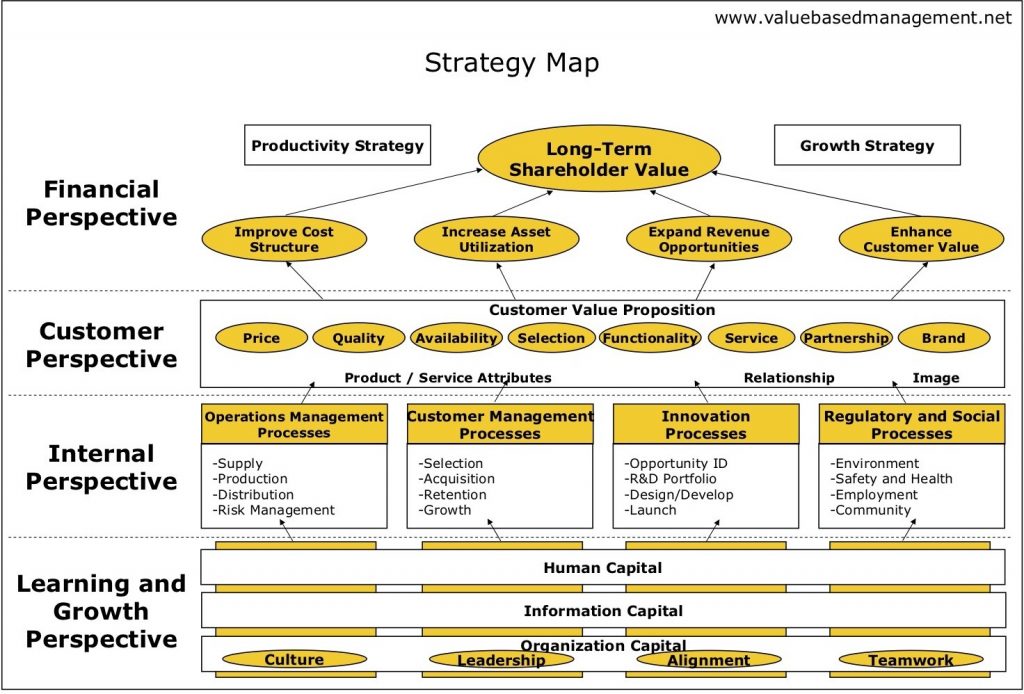
Image source
Book 3. The Fifth Discipline by Peter Senge
How do companies become learning organizations by thinking systems and thinking holistically? Peter Senge, an American systems scientist and senior lecturer at the MIT Sloan School of Management, offers 5 disciplines: A shared Vision, Mental Models, Team Learning, Personal Mastery and System Thinking.
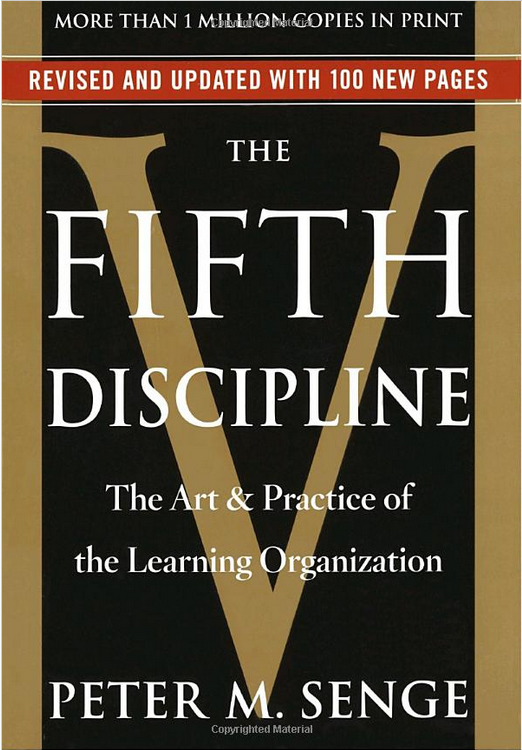
Author – Peter M. Senge
As organizations grow in complexity and newer challenges emerge, our ability to identify the right problem to solve becomes extremely important. Systems Thinking is the 5th discipline that the book talks about; which enables us with the ability to think cause-and-effect. Once we know the core problem that we need to solve, our ability to identify, design and innovate the right solutions, products and services for the market becomes accurate.
This book enabled me to define WHAT products, WHAT solutions and WHAT services to offer to the market in a very holistic manner.
Book 4. Change by Design by Tim Brown
At the core of this legendary book is the belief that most innovations come from a process of rigorous examination and not from a flash of brilliance. Tim Brown is the CEO of IDEO and he defines design thinking thus: the collaborative process by which the designer’s sensibilities and methods are employed to match people’s needs with what is technically feasible and a viable business strategy. The chapter on ‘Putting people first’ was of particular interest to me where he outlines three mutually reinforcing elements of any successful design programme: insight, observation and empathy. Insight is about learning from the lives of others, observation is watching what people don’t do, listening to what they don’t say and empathy is about standing in the shoes of others.
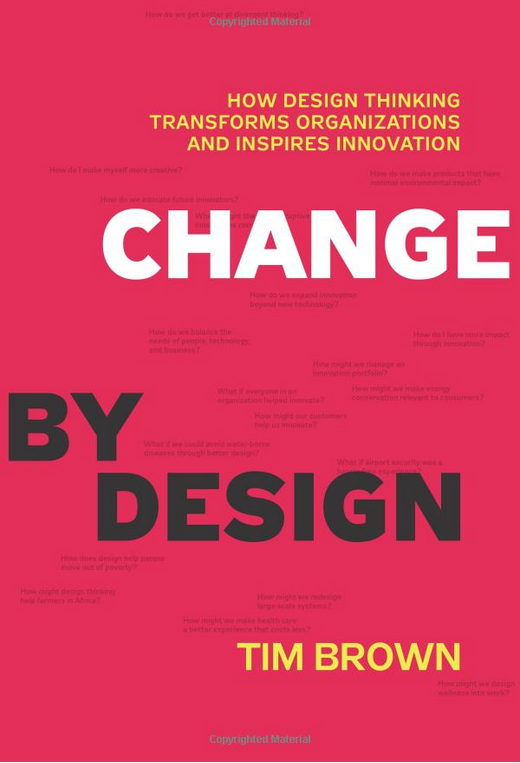
Author – Tim Brown
I firmly believe that design thinking is not the exclusive realm of designers – we all can learn from others’ lives, feel their pain points and think of solutions. At Robosoft we get to partner with a diverse set of companies, domains and end-consumers. What we solve for is vastly different for a bank as compared to say, a news organisation – Design Thinking helps us straddle such extremes.
Book 5. The Knowledge Creating Company by Nonaka and Takeuchi
Despite the devastation of the World War, Japan has emerged as a global economic power and a world leader in important industries like electronics and automobiles. In this book the authors contend that Japanese firms are innovative, create new knowledge and use it to produce successful products and technologies.
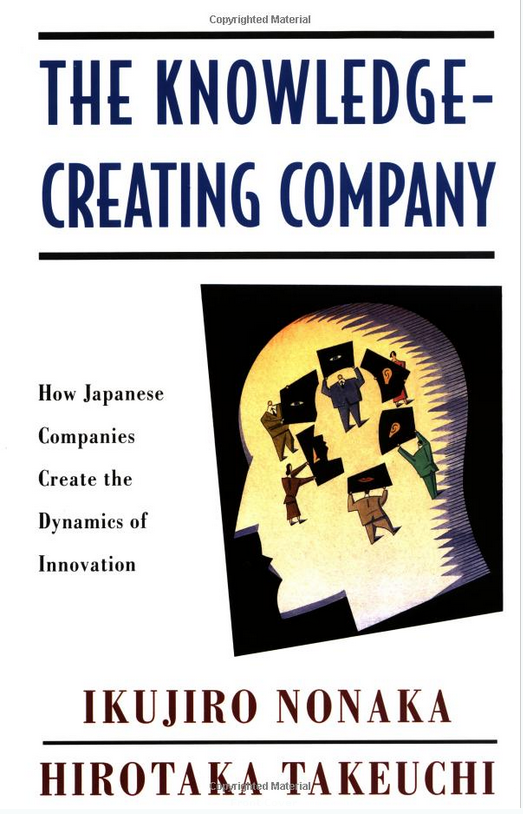
Author – Ikujiro Nonaka, Hirotaka Takeuchi
Author – Ikujiro Nonaka, Hirotaka Takeuchi
The culture of un-learning, learning and then innovating are the key ingredients towards becoming a knowledge organization. They say, “Culture eats strategy for breakfast”. Our ability to not depend on past success and create a new future depends heavily on our skill to un-learn; which then opens up for a possibility to learn and create new knowledge.
Summary:
While the above 5 books are on different subjects, they all are ‘connected’ in some fashion as they are all about making a difference to the customers. Peter Drucker famously said, “The purpose of business is to create and keep a customer”. What binds them all together and important for holistic business thinking could be summed up thus:
- Identifying the larger purpose of the organization is key to success and thus “start with WHY” is the most important read for all CXOs.
- Strategy is about differentiation, customer value proposition and answer the HOW for organizations. The design of strategy, its execution and monitoring are key to building successful companies and delivering value to shareholders, vendors, customers and employees
- Identifying the right problem to solve is very important and thus the power of cause-and-effect is key. ‘Systems thinking’ thus becomes extremely important to solve complex problems and it also ensures that we are not solving the symptom but the actual cause. This helps us identify the right products/services for our customers and answer the question “WHAT”
- Once we know the product/solution, it is important to design it well by being empathetic to the user who faces the problem and thus design thinking plays a very important role in innovating new products, services and processes
- To do all the above, it is a MUST to build a learning culture that enables the organization to continuously un-learn, learn and innovate.
I look forward to your views on these books and your recommendations on other good reads on the subject of business thinking.
This article was first published on LinkedIn by Ravi Teja Bommireddipalli





